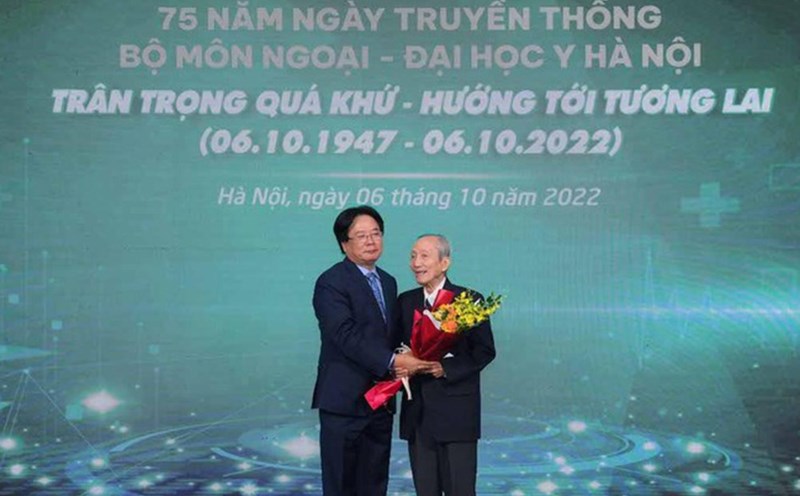Patient T.D.T (55 years old, Ho Chi Minh City) unfortunately has liver cancer. According to the patient, the patient is a teacher, so the work is not hard, but he often feels a feeling of prolonged fatigue, a ringing or severe pain in the upper right abdomen, which can spread to the back or right shoulder, so he decided to go to the doctor.
At Ho Chi Minh City Oncology Hospital, when performing clinical instructions by doctors, the results of patients with liver cancer required early intervention.
One of the outstanding advances today is the microwave incision technique, a method that has received many positive responses.
According to Dr. Nguyen Vinh Thinh - Head of Interventional ultrasound unit, Deputy Head of the Department of Endoscopy - Super ultrasound, Ho Chi Minh City Oncology Hospital, microwave tumor incineration is an on-site treatment technique, using high- frequency electromagnetic waves to create heat, destroying liver tumors. Unlike the high- frequency wave burning method, which creates heat by ionized matte, but the temperature does not exceed 100°C, microwaves are capable of creating a temperature above 100°C, helping to destroy tumors faster and more effectively.
More importantly, this method is not affected by the phenomenon of "heating generation", which does not reduce the effectiveness of treatment even when the tumor is near a large blood vessel.
For liver damage under 3cm in size and in the early stages, microwave incination is nearly as effective as surgery, but less invasive, said Dr. Thinh.
This method has many outstanding advantages: minimal encroachment, less pain, short hospital stay (usually 24h monitoring is the ability to discharge), and high accuracy thanks to the performance under ultrasound instructions. Thanks to the needle cooling technology, doctors can burn the tumor while still protecting the healthy liver tissue around.
However, Dr. Thinh also noted some limitations. This method is not suitable for tumors that are too large (over 5cm), have too many damages or are in dangerous locations such as near the heart, lungs or digestive tract. In these cases, the Oncology Hospital applies a technique of pumping water into the abdominal cavity to separate the tumor from the surrounding organ, making the burning process safer.
After treatment, the patient will be monitored with a CT scan or MRI after 1 month to evaluate the effectiveness. If the burns no longer have cancer, the patient is monitored periodically every 3 months in the first year, then every 6 months. If the tumor has not been thoroughly treated, the doctor will re-evaluate and can perform an additional microwave burning or switch to another treatment option.
This is a less invasive, effective technique and is increasingly popular in the treatment of early-stage liver cancer. The important thing is that patients need to be screened and detected early to have a chance for thorough treatment, Dr. Thinh emphasized.










